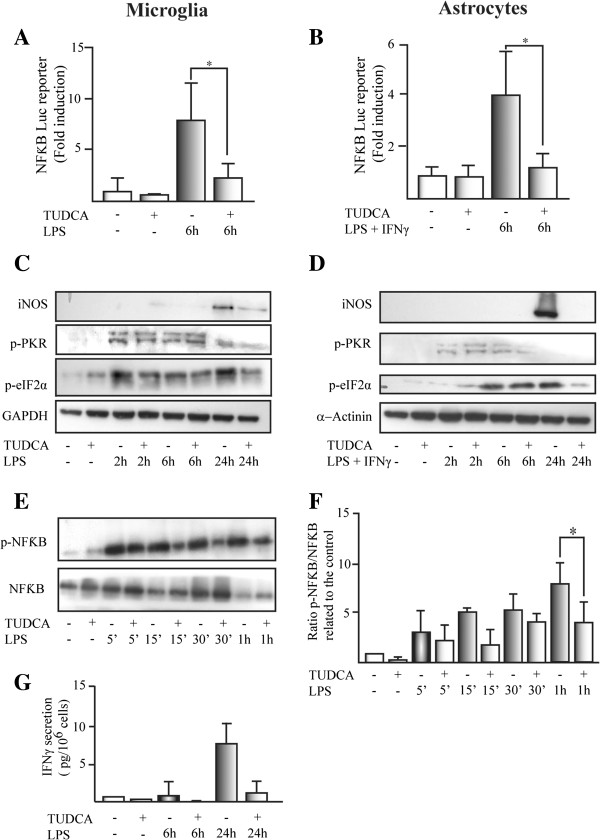Figure 3.
TUDCA inhibits proinflammatory stimuli-induced NFκB activation in glial cells. The effect of TUDCA on proinflammatory stimuli-induced luciferase activation of the NFκB-pGL3 firefly reporter was studied in (A) microglial cells and (B) astrocytes. SV40-pRL Renilla reporter was used as a control for transfection efficiency. The results represent the mean of the fold induction related to the control ± SD of at least four experiments in triplicate. The expression of iNOS and the phosphorylation status for PKR (p-PKR) and eIF2α (p-eIF2α) was studied by Western-blot in (C) microglial cells and (D) astrocytes. GAPDH and α-actinin were used as loading control for microglial cells and astrocytes, respectively. For band densitometries see Additional file 3. (E) NFκB activation was determined by the phosphorylation of p65 induced (p-NFκB) by LPS in microglial cells. The ratio between phosphorylated p65 related to the total p65 (NFκB) expression was presented in (F). The results represent the mean of the fold induction related to the control for phosphorylated p65 (NFκB)/total p65 (NFκB) ± SD of four independent experiments. (G) The secretion of the cytokines IFN-γ (pg/106 cells) was studied in the conditioned media of microglial cells. Data represent the mean (pg/106 cells) ± SD of four experiments in triplicate.*P <0.05.

